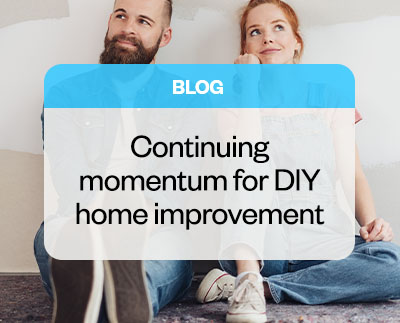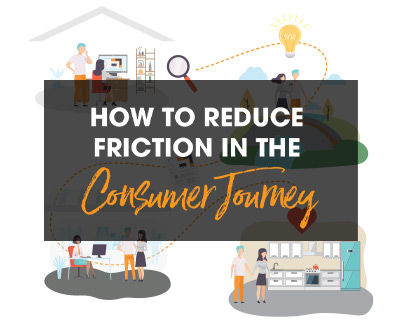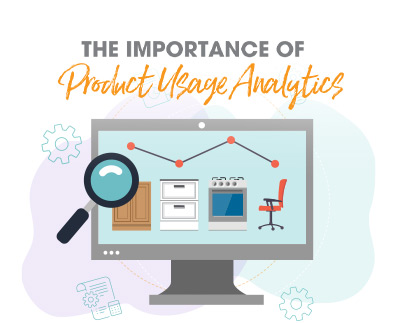
The trend of homeowners wanting to do it themselves hasn’t abated; in fact, it likely gained new life because of lockdowns and stay-at-home orders in 2020. As homeowners were confined to their homes, they saw no reason not to tackle that remodel or fix-it-up project that they never had the time or disposable income for before.
In addition, we all know that once you’ve had a taste of the satisfaction and sense of accomplishment that comes with remaking a room yourself, you tend not to shy away from future projects—and in some cases, may actively begin to seek them out.
There are a lot of indications that the increase in DIY projects by homeowners is creating a wave of strong, sustained demand. Despite the rise in vaccination rates and people getting back out to society, it is expected that the work from home/home office situation created by the pandemic and people finding new jobs/changing the way they work will be a long-term change.
There have been dedicated spaces made for at-home learning, which will either transition into homework spots as children go back to in-person school, or completely different purposes again if they’re heading back to a college or university. People also re-discovered their kitchens and re-kindled their love for cooking, both indoors and out. Watching new movies and binging TV from the comfort of your couch has become a standard weekly, if not daily, activity.
To top that off, there has been a huge surge among the millennial generation in home buying. These new homeowners will, once they’ve gotten into the groove of making home payments, turn their attention (and money) to upgrading the interiors of where they’ve chosen to live. The power of being able to customize their new homes as much as they want, until it reflects their own taste and style, is a huge draw.
In short, the future for DIY home improvement is bright.
As these recent additions to the DIY field look to take on new projects and tackle bigger, more involved spaces within their homes, they will be looking to work with those partners, retailers, manufacturers and vendors that can help them quickly and easily make the dream design in their heads into a reality.
What a DIY retailer can do
With the growth of DIY home improvement not expected to slow down anytime soon, the opportunity in front of a DIY retailer is to find a way to engage these newly active home improvement addicts.
There are the traditional methods of advertising and in-store displays, but for a generation trained to do everything online (millennials) and new entries to the DIY field that learned their trade online during a lockdown - those efforts may be too late to capture or grow their interest, not to mention converting that interest into a purchase.
Recent surveys have shown that those new to DIY home improvement turned to YouTube, online tutorials and television programs for inspiration and information on how to undertake an improvement project.
Providing an online shopping and showroom experience for the do-it-yourself (and the do-it-for-me) crowd is important to help them see how good their work could look. It just makes sense to build upon their interest - and their already proven desire to start their thinking in the comfort of their own homes. An effective online tool from a DIY retailer will enable different design ideas and various types of furnishings, appliances and color options to be tried out. This can then engage these new DIY’ers at home, let them test out their vision and lead them to make a purchasing decision (either online or in a store).
Nurturing their interest
The next question is, naturally, what type of online DIY home improvement experience do you need to offer? What specific features does an experience need to be successful? How can you help them grow into the DIY experts they aspire to be? What will help convert them to a sale?
There are some key features needed in an online DIY retailer solution that will be useful for those newly vested in DIY home improvement:
- Immersive experience – Enable the newly minted DIYer to really dig in and immerse themselves in what their reimagined or remodelled room can be. Focus their journey through visualization. Allow them to see what different styles, products and options would look like together—and in their own house. Embrace the latest technologies to create a lifelike environment for them to view; perhaps even enable a virtual walkthrough or augmented reality viewing of their design vision. Draw the DIYer in and let them create.
- Ability to collaborate – It is important to remember that no two DIYers work in exactly the same way. Some like to do everything themselves in one sitting, from design to purchase. Some collaborate with family and friends until a design is perfect. Some like to start a project and then collaborate with a professional designer that can take their initial vision and make recommendations of products or design tweaks that help it become a reality. Some like to create their mockup and then work with the store itself to see how it can evolve. The point is, any tool worth its weight to both a new DIYer and a DIY retailer is one that enables collaboration options.
- Personalization – DIY home improvement is really all about the choices you make. To have an engaging online experience for DIYers, you need to offer as many choices and options as possible. One of the longtime benefits of walking through a store is the ability to window shop and look at the differences between products. Offering that to online DIY shoppers will be the difference between a useful tool and one that’s quickly dropped. At the same time, your online experience should learn from their preferences and use that knowledge to help DIYers narrow down their choices (and not re-show them options they already declined).
- Ease of use – Make it easy for the DIYer to review their design and make tweaks as necessary. Enable them to share their mockup with friends, family members and designers. Some may want to build a shopping list or print an image. Ensure that your experience can easily flow from a PC to a mobile device, to an in-person showroom. Think of how a user would want to use their work in your online tool as a blueprint—and then empower them to do so.
- Don’t make a hard sell – An important stage for many DIY’ers is the discovery process. You want them to see your tool as a way to try out some different options. See what a kitchen remodelling might look like. Digitally test out a new shower or sink top. How about a new colour of paint? The value of your online tool is enabling them to test out their vision and trying out various combinations until they’re happy with it. Now imagine if every time an option was changed or a different room was started, they got a message asking if they wanted to make a purchase. It’d turn off your DIY audience pretty quickly. Of course, you want them to see how your products look and to buy them—but the value here is to create a DIY retailer experience they will come back to again and again.
Room for growth
Establishing a strong online presence and shopping experience for DIYers will have immediate benefits. In order to take advantage of the current—and future—increase in the number of DIYers looking to visualize a project and then act on it, the time to create or upgrade your online shopping experience is now.
That said, the world moves fast—and technology even faster. You want to make sure that your online experience is set up with the latest technology—and that whomever you work with has the interest, technology and skills to ensure that your experience evolves along with the industry.
If you do that, you can be sure that today’s DIYers will continue to take advantage of your online tools and offerings to visualize and create their dream kitchens, bathrooms, home offices and living areas.
Want more content?
Delivering an omnichannel buying experience
Related posts
Share this Post





